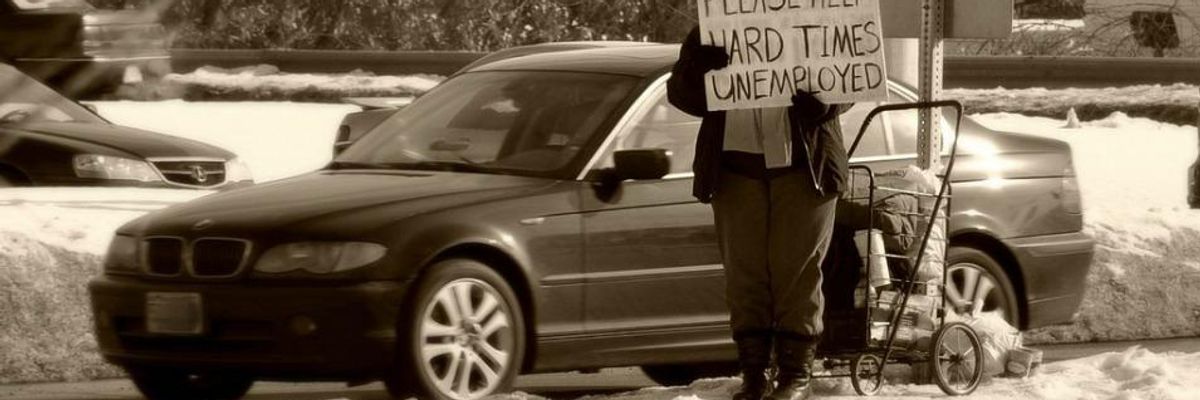Poverty is worse than you think, but it's different than you think, too.
Even if you count yourself as reasonably well informed about poverty in the U.S., what you think you know may be wrong. For example, you may know that by the official Census Bureau measure, 15 percent of the population was considered poor in 2012, about 46 million people; you may even know that there's a lot of variation in that rate by age (it's much higher for children and much lower for older people), by race (it's radically higher for African Americans and Hispanics), by geography (it's higher in the South, as it always has been, and it's now growing fastest in the suburbs), and so on.
You may even know that the official measure of poverty is outdated and inaccurate, and that, using the Bureau's new Supplemental Poverty Measure (SPM), the problem is, in truth, a bit worse: the SPM shows that more likely 16 percent of Americans were poor in 2012, or about 50 million people, and that poverty was much higher among the elderly than the official measure would lead us to believe, and a bit lower among children.
Both of these approaches share a common problem, however: they are static, point-in-time measures, telling you how many people were poor at the time of the surveys used to gather these data. But poverty in America is fluid, and people move in and out of poverty over the course of a year and over the course of their lives.
Thanks to other data from the Census Bureau, we can step back a bit to see that more common kind of movement in and out of poverty. If we look at how many Americans were poor for at least two months during 2009, 2010, and 2011, for example, we find a poverty rate not equal to the Census Bureau's 15 or 16 percent--but twice that, at 31.6 percent. That is, over a recent three-year period, almost one-third of all Americans were poor at least once for two months or more.
There's another important lesson to learn from this data: while lots of Americans experienced a "spell" of poverty during those years, only 3.5 percent of the population was poor for all 36 months. So how we think about poverty is all wrong: it's a much more common occurrence than people realize, and the chronic, persistent, generational poverty that features so prominently in political rhetoric and media coverage is very much the exception, rather than the rule.
We can step back even further, and look at the likelihood that any American will encounter poverty at any point over the course of their entire adult lives, thanks especially to research done by Mark Rank at Washington University in St. Louis. What his work tells us is that more than 40 percent of Americans between the ages of 25 and 60 will be poor for at least a year. Over the same period, more than half will be poor or nearly poor, with income at 150 percent of the poverty line, or about $27,000 annually for a family of three.
So poverty in the U.S. is, in fact, a much larger problem than we think it is, and it's one that most Americans will face.
While that's a grim realization, perhaps it's also a cause for hope. Maybe if more Americans understood what their own personal stake is in committing to poverty reduction, they might be more inclined to press for higher wages, better access to affordable child care, more generous social welfare programs, a reinvigorated right to form a union, and so on. These are not policies that benefit some group of Others, but policies that serve the majority of us. If we can't count on empathy to improve well-being, maybe selfishness will do the trick?
We live in a world of widespread economic fragility, of insecurity, of what some have come to call precarity: According to one recent survey, about one-in-four Americans have no savings at all.
U.S. household economies are fragile, so it often just takes one crisis to push a family over the edge--from just getting by to not getting by at all: An injury that makes it impossible to work, a sudden physical or mental illness, a death in the family, a car breaking down, or even the birth of a new baby. All of these can be traumatic economic events for a family with little or no savings and no margin for error--events that most families recover from, with time. But then the next crisis hits. And in the U.S., you can't necessarily count on the social safety net to be there for you when you need it. And you'll need it.
We can't hope to address a problem if we misdiagnose it, and one of the virtues of thinking more clearly about what poverty actually looks like is that a better diagnosis might alter the political landscape.
Don't fight poverty because you feel sorry for other people; fight poverty because the odds are increasingly high that you and your family will be poor someday, too.

